Medical Healthcare Marketing: An Ultimate Guide
Let’s take a look at how healthcare providers can improve their service delivery and set themselves apart from competitors.

Almost 90% of Americans search for healthcare information on social media. Factors such as how quickly a patient can make an appointment, reviews of healthcare providers, and how healthcare marketing teams use social media drive buying decisions.
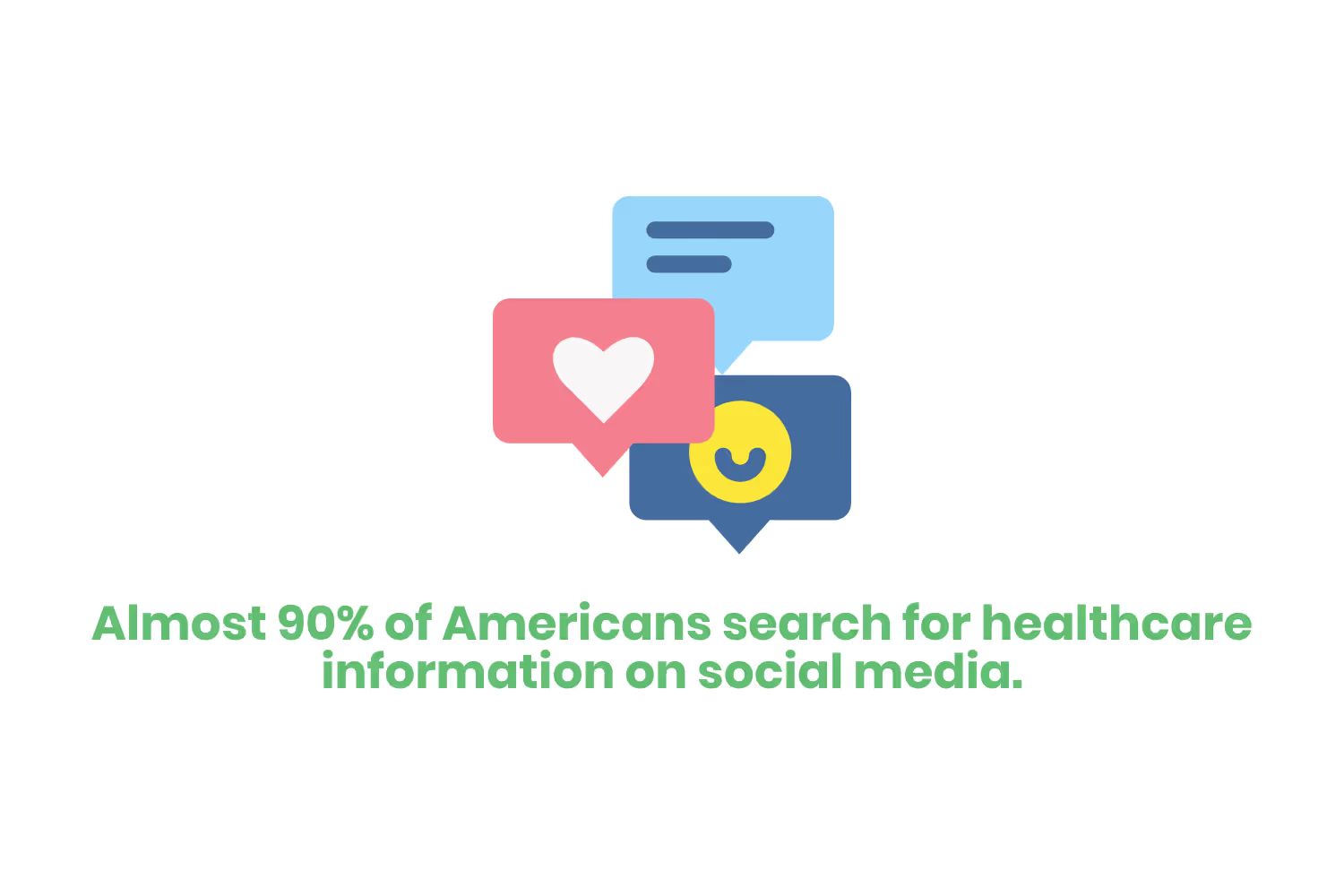
Having a solid marketing strategy is key for any healthcare facility, no matter how big or small. Having a marketing plan can not only help you reach new clients, but also retain your current customers. Let’s take a look at how healthcare providers can improve their service delivery and set themselves apart from competitors.
What is Healthcare Marketing?
So what is healthcare marketing exactly? It is the process of healthcare companies practicing strategic outreach and communication in order to attract patients. This form of marketing doesn’t stop after getting these patients in the door. This undertaking should continue to guide them through their healthcare journey and keep them engaged with the system.
Healthcare marketing, when done properly, can offer the following for your company:
- Boost patient experience.
- Build your own brand.
- Keep your patients engaged with personalized and prompt outreach.
- Empower your clients to make smarter and healthier decisions.
- Grow your consumer base, retain existing clients, and improve your reputation in your community.
- Drive stronger leads and increase your revenue.
- Increase opportunities for physician referrals.
- Position your organization as leaders in the market.
- Realign strategies after evaluating productivity. This will better streamline your workload.
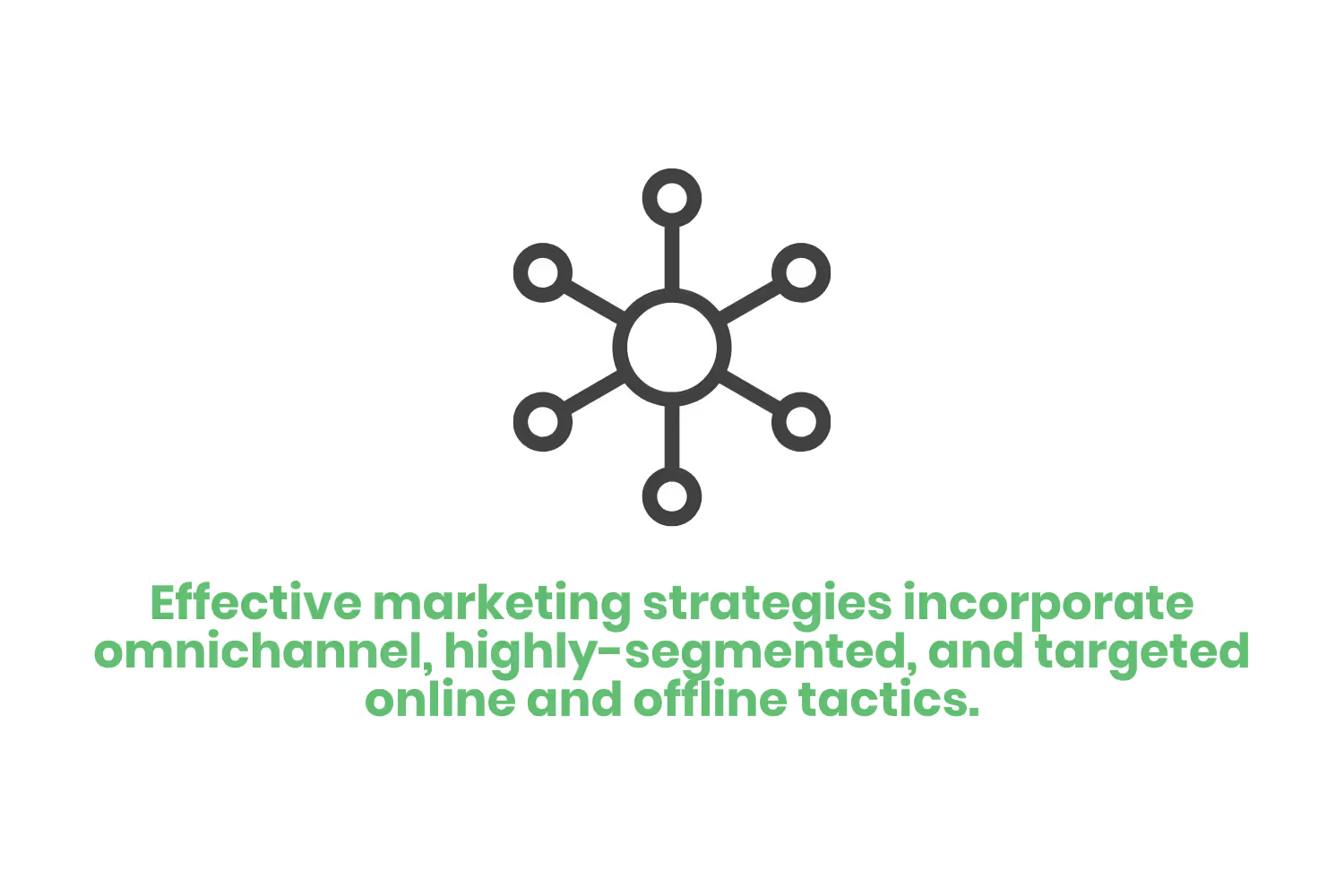
Effective marketing strategies incorporate omnichannel, highly-segmented, and targeted online and offline tactics. When integrating these tactics, you can drive your engagement and strengthen your revenue cycle. Let’s look at some marketing strategies to consider when
1. Consistent Healthcare Branding
Differentiating yourself from other healthcare providers to an online audience means that people will be more likely to invest in your services. This consistent branding helps to establish credibility and a larger reach when it comes to advertising your services.
Consumers don’t tend to buy products they aren't familiar with, and this is no different when it comes to looking for a good hospital or care facility. Through brand messaging, your marketing team can better communicate what makes them different from competitors, as well as establish a presence in the digital space.
2. Mobile-Friendly Platform
As of September 2020, Google indexes the mobile iteration of a website before the desktop version. In other words, they rank responsive sites higher than non-responsive sites. For reference, a responsive website automatically modifies the size of a screen. This way the viewing is the same whether you access the site on a phone, computer, tablet, or another device.
Having a mobile-friendly platform for your website is an absolute must to ensure that patients are able to easily engage with your organization.
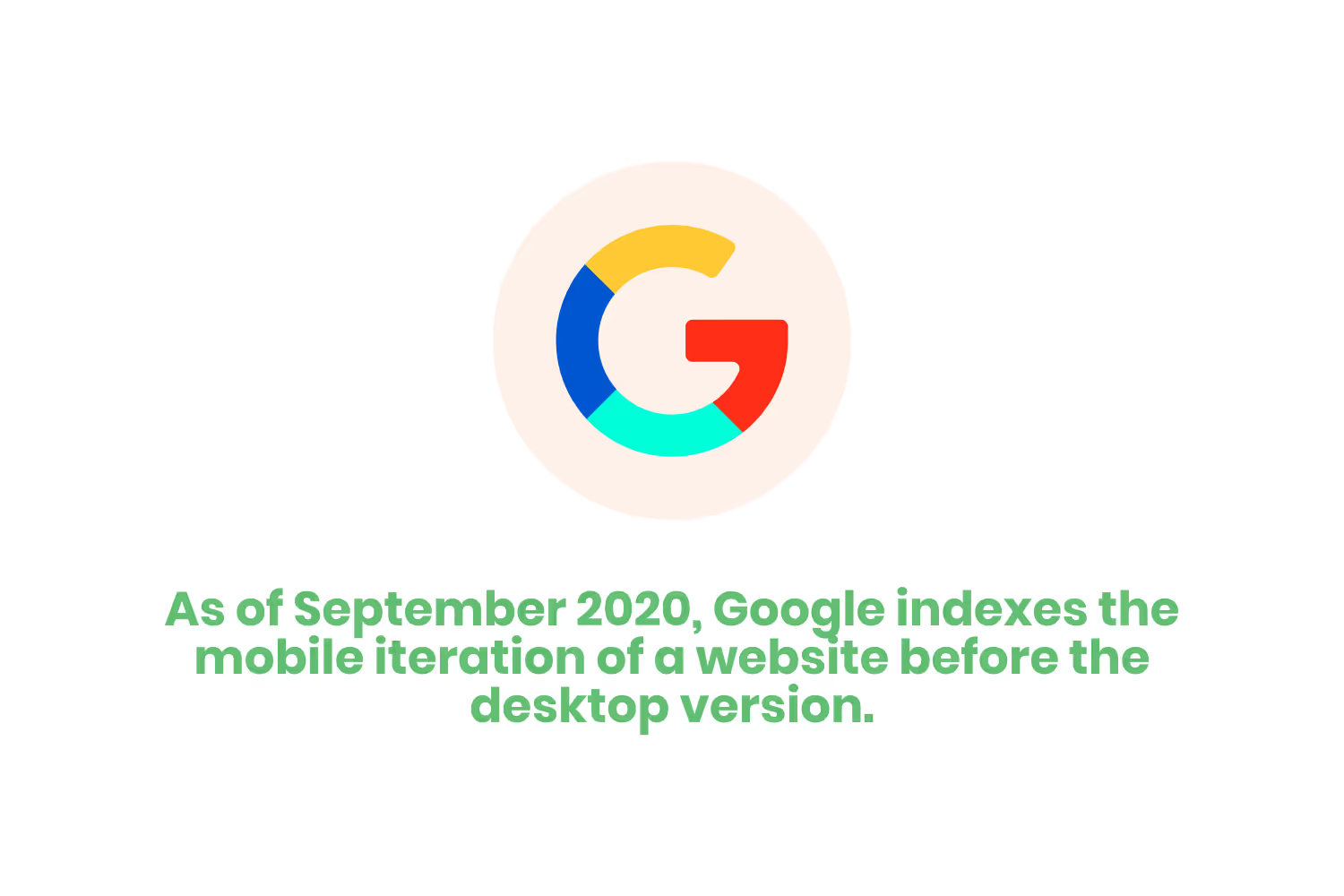
3. Search Engine Optimization (SEO)
When talking about the primary source of online traffic, search engines are number one on the list for healthcare providers today. So it only makes sense that these same providers must fully optimize their website for indexing.
Search engine optimization (SEO) is a powerful tool if you know how to use it. It can strategically prepare your site so that it appears before your competitors’. This organic marketing strategy involves using the correct optimal phrases and keywords so that search engines can understand your website. Rankings ultimately depend on how you use the keywords and the readability of the site.
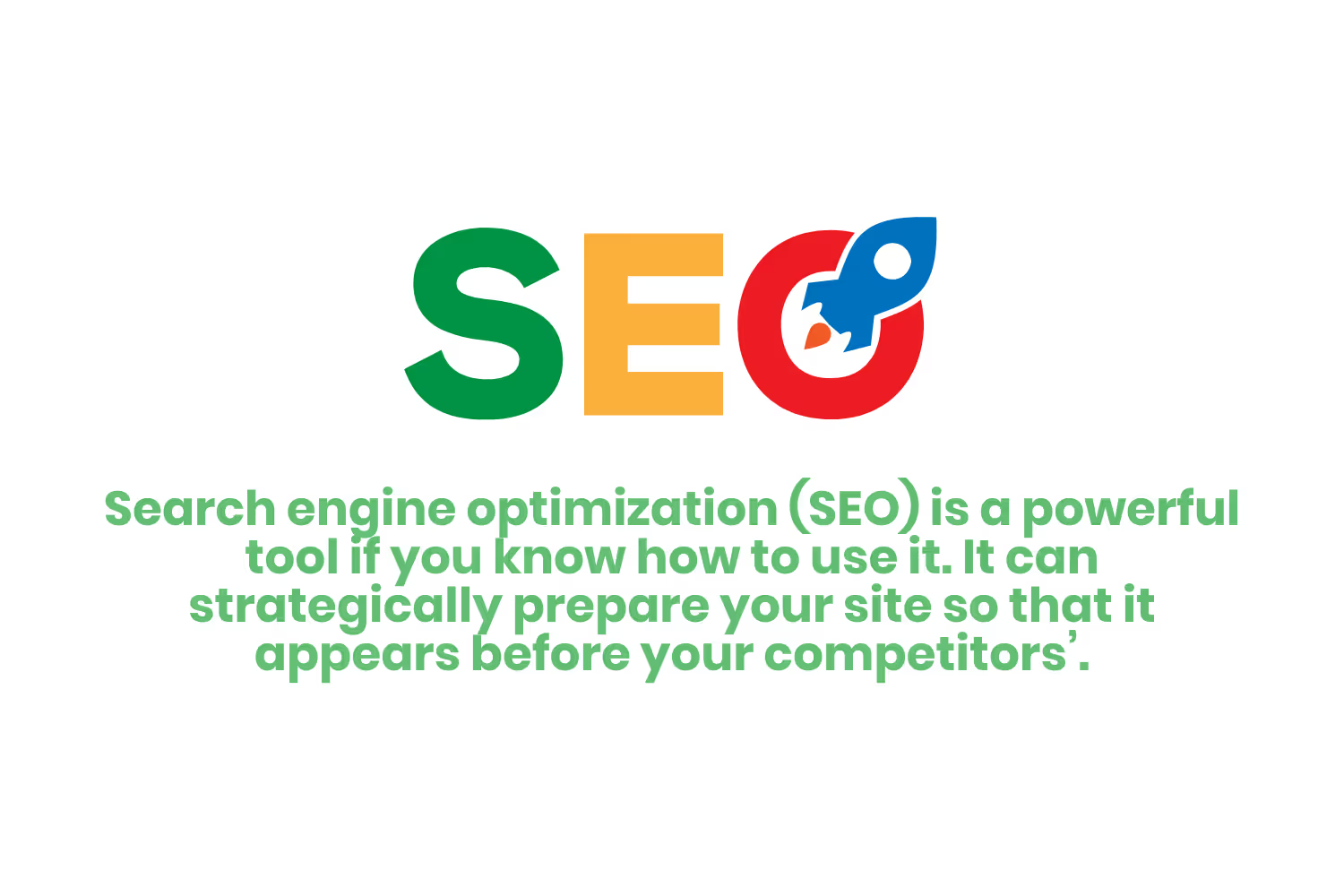
4. Healthcare Marketing and Online Advertising
While SEO is a great tool for advertising sites organically, paid advertisements are going to take precedence in ranking. For example, your site may rank first organically for a term like “chiropractor in Texas”, but there are still paid advertisements for websites before yours that people will see first.
One of the most cost-effective ways to advertise online is through pay-per-click advertising (PPC). PPC advertisements are laser-targeted to boost your site to the top of the search list for specific search terms.
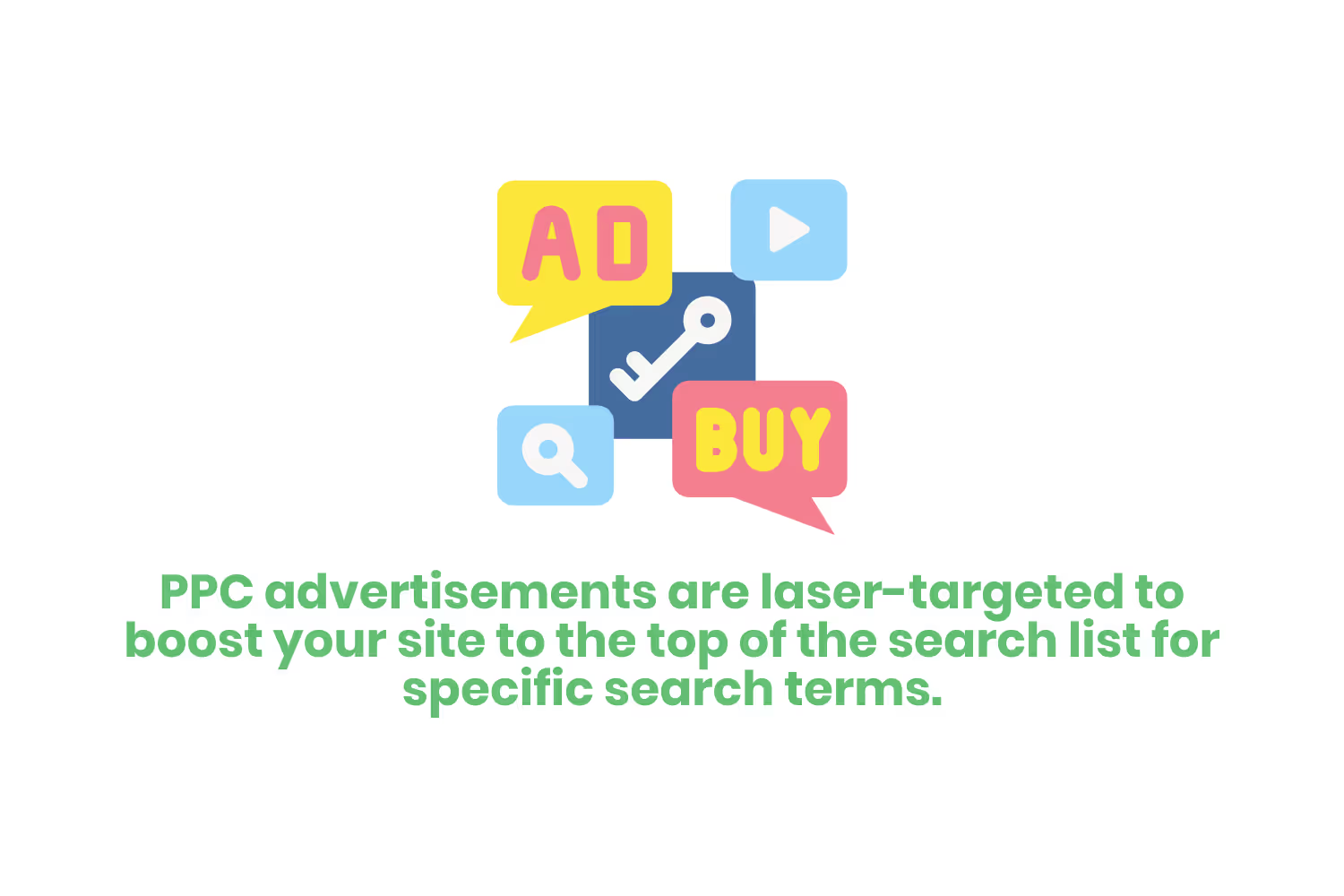
Not only is this easy on the wallet, but it is also pretty measurable in terms of performance. With this strategy, you can manage your budget and decide how much you want to spend to keep your page on top of the search engine results page (SERP).
5. Leverage Social Media
We all know that social media does wonders to spread brand awareness. These free platforms are perfect for practitioners and healthcare organizations to interact with potential customers, promote services, and more.
Organic (non-paid) social media strategies are perfect for brand building and growing your community. On top of this, make sure to allocate part of your marketing budget for paid social media advertisements. You can “boost” specific posts to reach a wider audience for a set price. Engaging in both of these strategies will yield the best result!
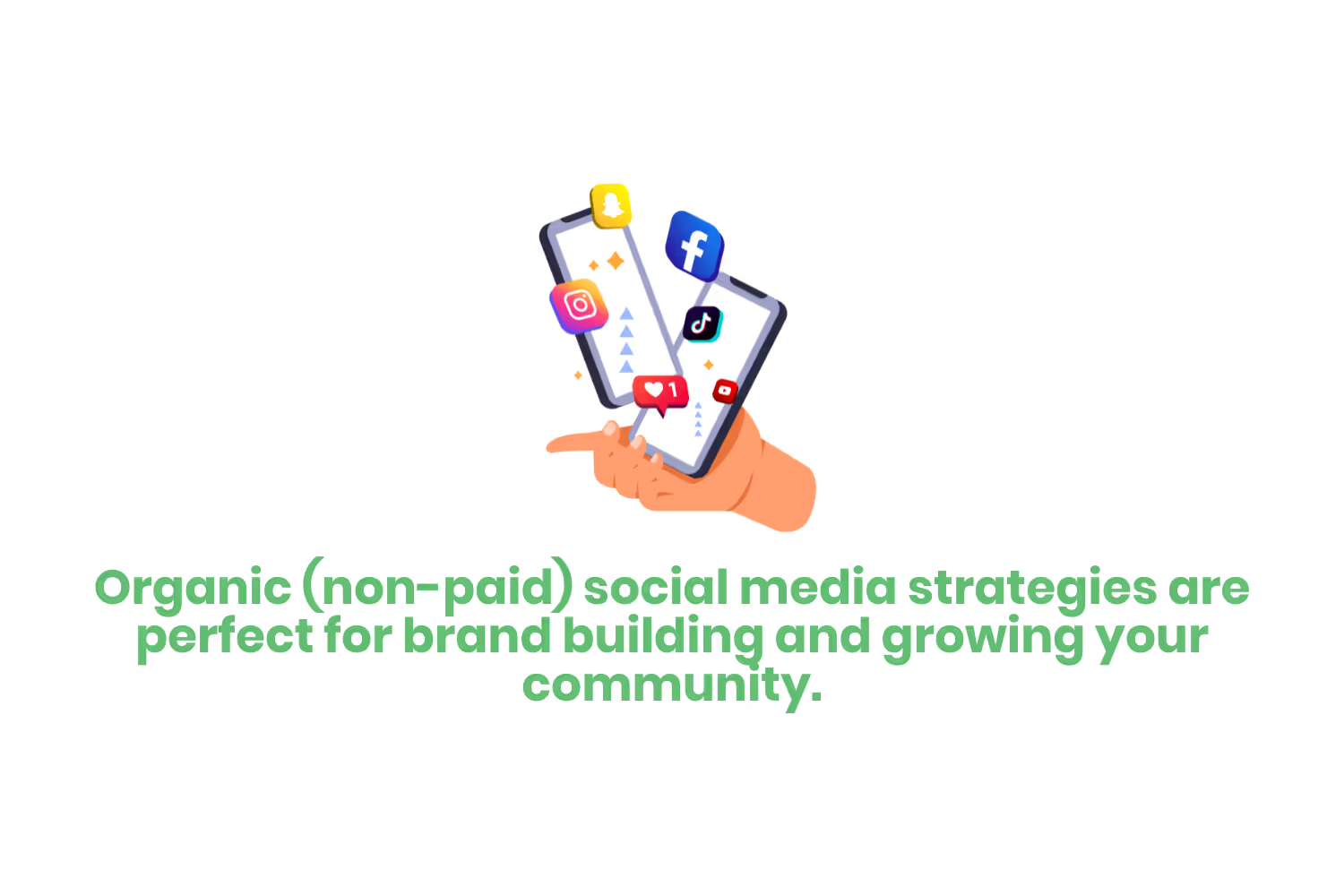
6. Demonstrating Expertise
Prospective consumers of any industry are more likely to remember a brand that establishes themselves as an authority in their specialty. This is especially true in the medical industry! A great way to demonstrate your expert knowledge and specialties is by content marketing.
This marketing strategy involves creating and sharing content such as blogs, videos, and more. We use this to peak interest in products and services of a business and when done right, content marketing can drive sales and bring in new customers.

7. Receiving Feedback
59% of Americans believe patient reviews are very important or somewhat important when it comes to choosing a healthcare provider. Healthcare organizations must strive to gain positive feedback from their satisfied patients.
Providing a way for patients to leave feedback can reduce the amount of negative comments you might receive on public platforms later. Quickly addressing any concerns isn’t just for the benefit of your Google review score, but also strengthens your relationship with your patients.
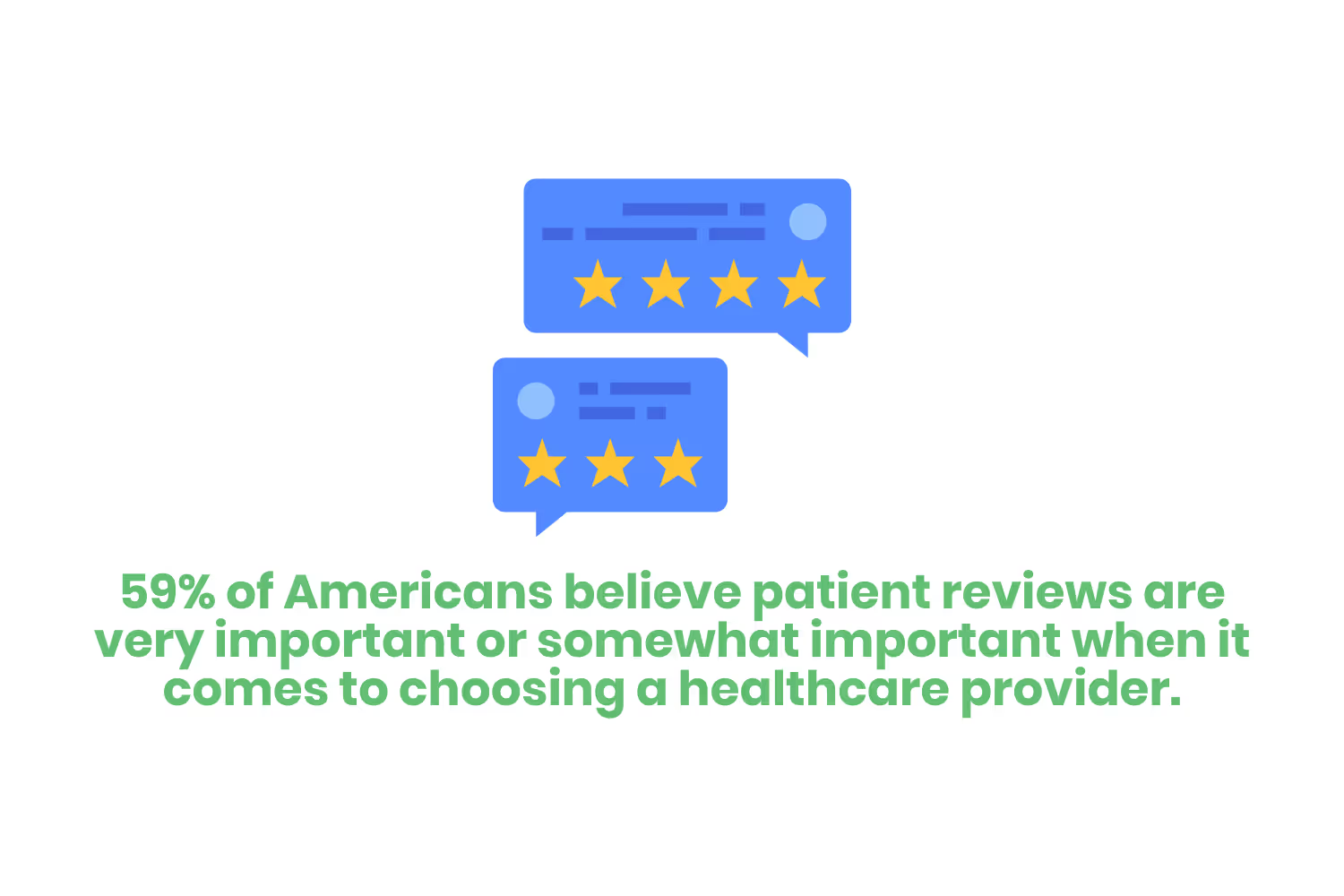
8. Managing Reputation
Speaking of receiving negative feedback, it’s an unfortunate truth that you likely will receive a few (no matter how hard you try to avoid them). And that’s okay! It comes with the job. But still, a healthcare organization must work to maintain a good reputation even in the face of public criticism.
Make sure to reply to any negative reviews in a way that is HIPAA compliant and empathetic. Even if the review is crass in nature, remember to thank them for their feedback. By addressing their concerns directly and communicating how you plan to resolve their issue, you demonstrate that you conduct business professionally and are flexible enough to accommodate your patients.
9. Building Engaging Relationships with Clients
Consider using clinical data in electronic health record (EHR) systems along with customer relationship management (CRM) software to target clients that can benefit from your services. Start by recognizing how patients typically begin to interact with your company. Introductory touch points might include your website, third-party physician listings, among other channels.
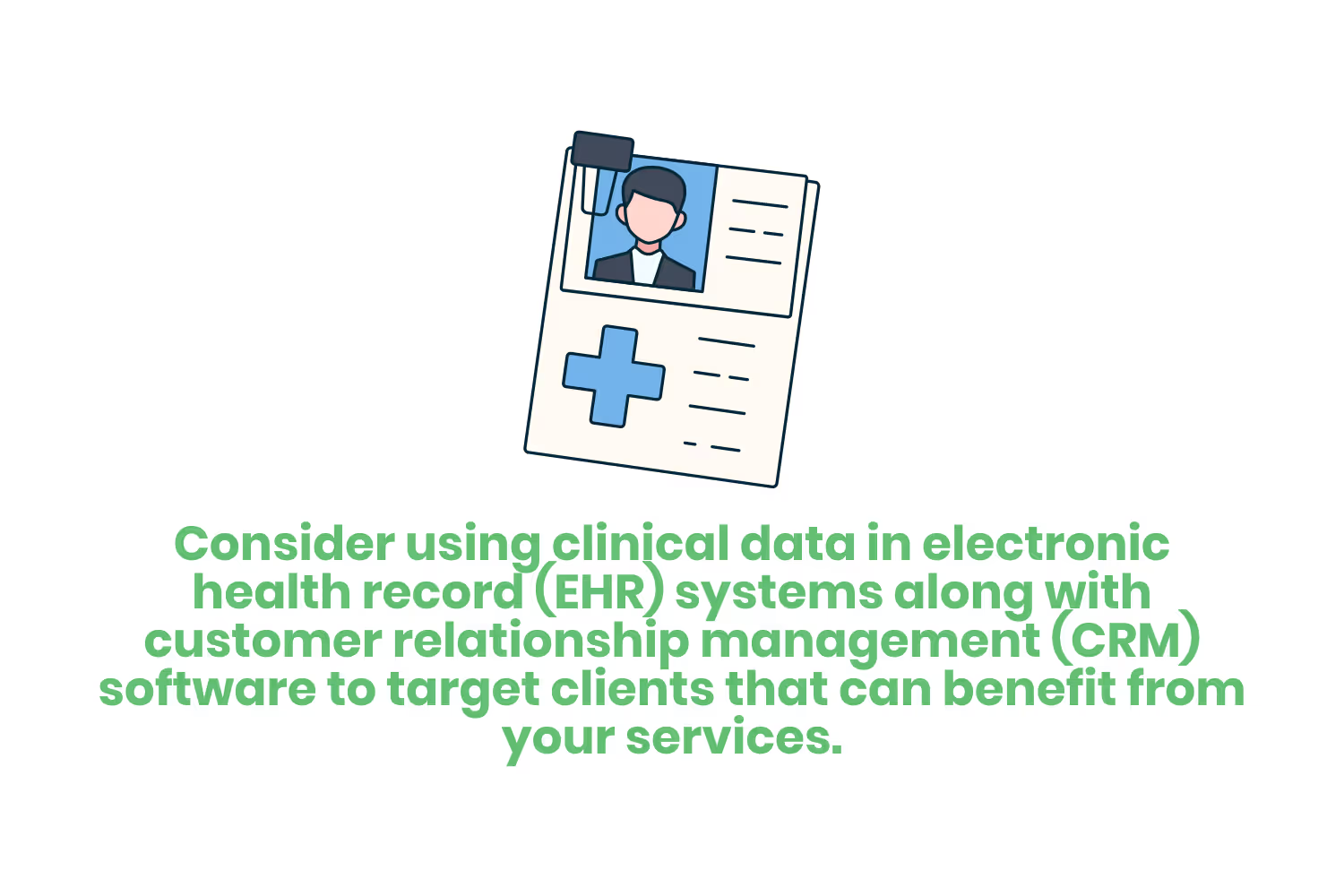
Once you have an idea where personalized ads will likely reach your target audience, it’s time to place them. Make sure to be intentional about these ad placements. If the ad is not placed alongside relevant content, you likely will not see a conversion. You may even annoy a potential client.
10. Target Referrals
Doctor referrals happen to be an effective way to bring in new healthcare consumers, so it’s time to start socializing! And before you start saying how you don’t have time to go out and have lunch with every physician in a 50 mile radius, don’t worry, you don’t have to.
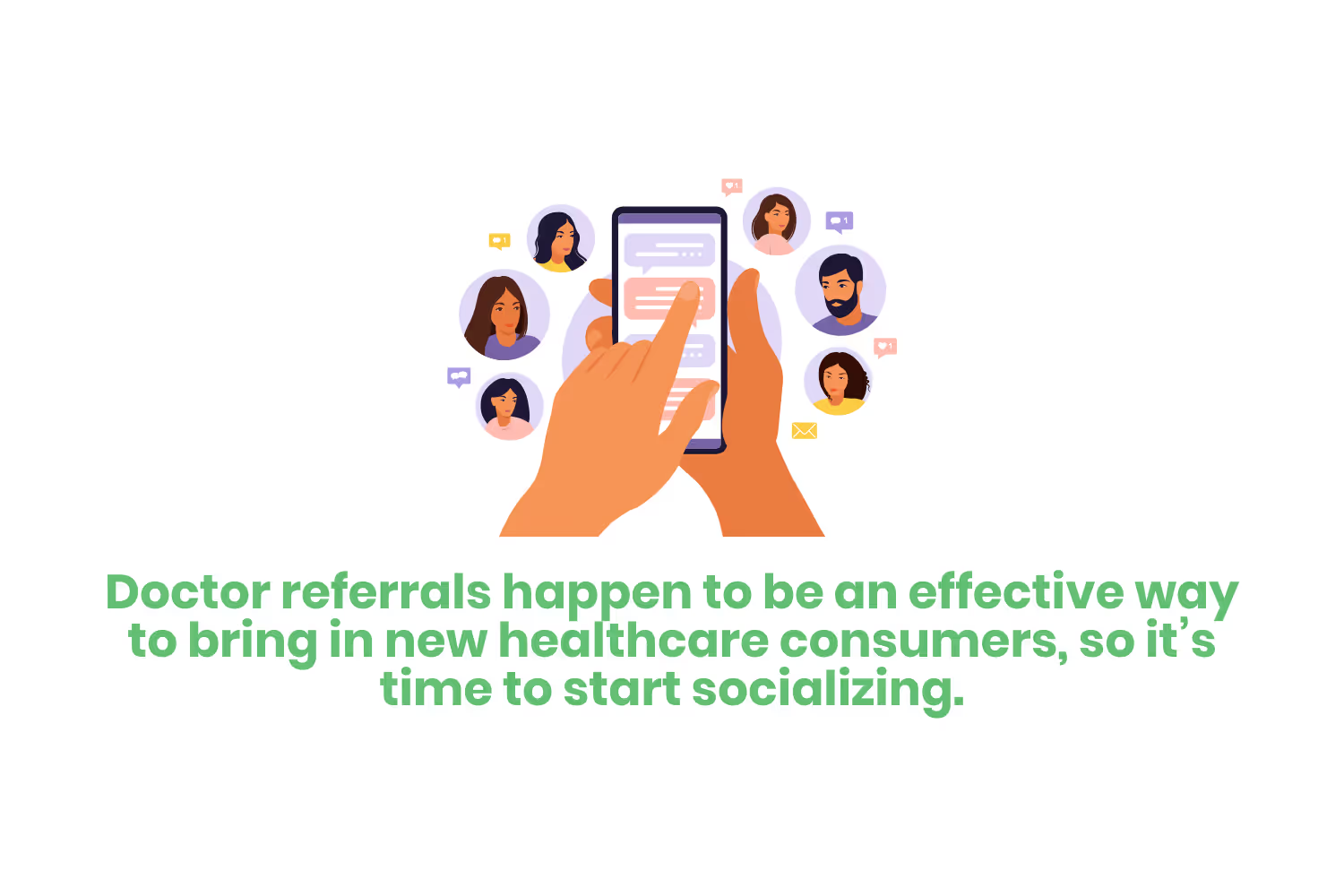
Here are some suggestions to help you get your name out there:
- Welcome new healthcare professionals to the area with a letter or email.
- Reach out regularly to physicians to establish a friendly relationship. If you have time, invite them out to lunch every now and again.
- Engage with your community! Referring physicians are more likely to utilize your practice’s services if they notice you engaging in public spaces.
- Thank your referring physician with a phone call or handwritten note. Also, keep them up to date with the referred patient’s condition and treatment plan you administered. With this attention to detail and courtesy provided by you, they are sure to be appreciative and will likely continue to refer patients your way.
- Keep your contact information on your website. Also, be sure to have an easy-to-use referral form available on your site. This way you make it easy for doctors to refer their patients to you!
11. Traditional Media Options
Investing in external media opportunities can be scary due to the price tag associated with it, but can be very effective when done right. Traditional media such as radio, television, and newspapers can do wonders for your return on investment (ROI).
Having media buyers outside of the healthcare space make decisions regarding your external media advertising is a great way to make sure your advertisements get seen by the right audience. Airing your advertisement on a channel with demographics that represent your clientele is a perfect example of a successful external marketing strategy.
12. Use Analytics to Secure Your Budget
When considering your marketing budget, it is helpful to analyze your previous campaigns. While marketing teams often receive their budgets from executive level management, this can lead to over or under-spending.

Both of these outcomes obviously can then lead to a diminish in the marketing team’s impact on the health system. Not Good.
Using analytics on previous strategies will help you determine a more accurate budget to reach those key demographics as well as better present your findings to executives for their consideration.
13. Audit Call Center's Response to Marketing Initiatives
Alright, so you have put your awesome new marketing strategy into effect (thanks to this blog) and things are going great! So great that your organization’s call center is being bombarded daily with new patients looking for an appointment. But what if they can’t keep up with the influx of new patients?
That’s right, you could have the best marketing strategy this side of the Mississippi but if your call center can’t handle the calls properly, you’re going to end up losing money. An audit of the phones team can reveal possible detriments to your business such as:
- Long hold times for new patients.
- Confusion or miscommunication.
- Ineffective or slow scheduling system.
No marketing strategy in the healthcare field is complete without the right training for your team members on how to better represent your brand!
14. Track Your Marketing Strategy
Tracking your marketing strategy is not only beneficial when setting your marketing budget, but for you ROI, too. Continuously monitoring and tracking your plan of action may sound daunting, but here are some ways to do this:
- Use a CRM. You can use this to track how consumers interact with your campaigns via emails, call centers, and landing pages.
- Use Google Analytics. Determine which terms do best when it comes to ranking your website and which terms you should include.
- Track your PPC campaigns. Consider setting up tools such as Google AdWords.
- Use a HIPAA-compliant call-tracking system. You can see how your paid advertising is paying off while monitoring your front desk team.
15. Check In with Your Current Healthcare Consumers
Word-of-mouth is an underrated form of marketing in today’s society, I’ll say it. Remember the days when you heard about something through your friend who heard about it from her uncle’s second cousin twice removed? Well, that still applies today.
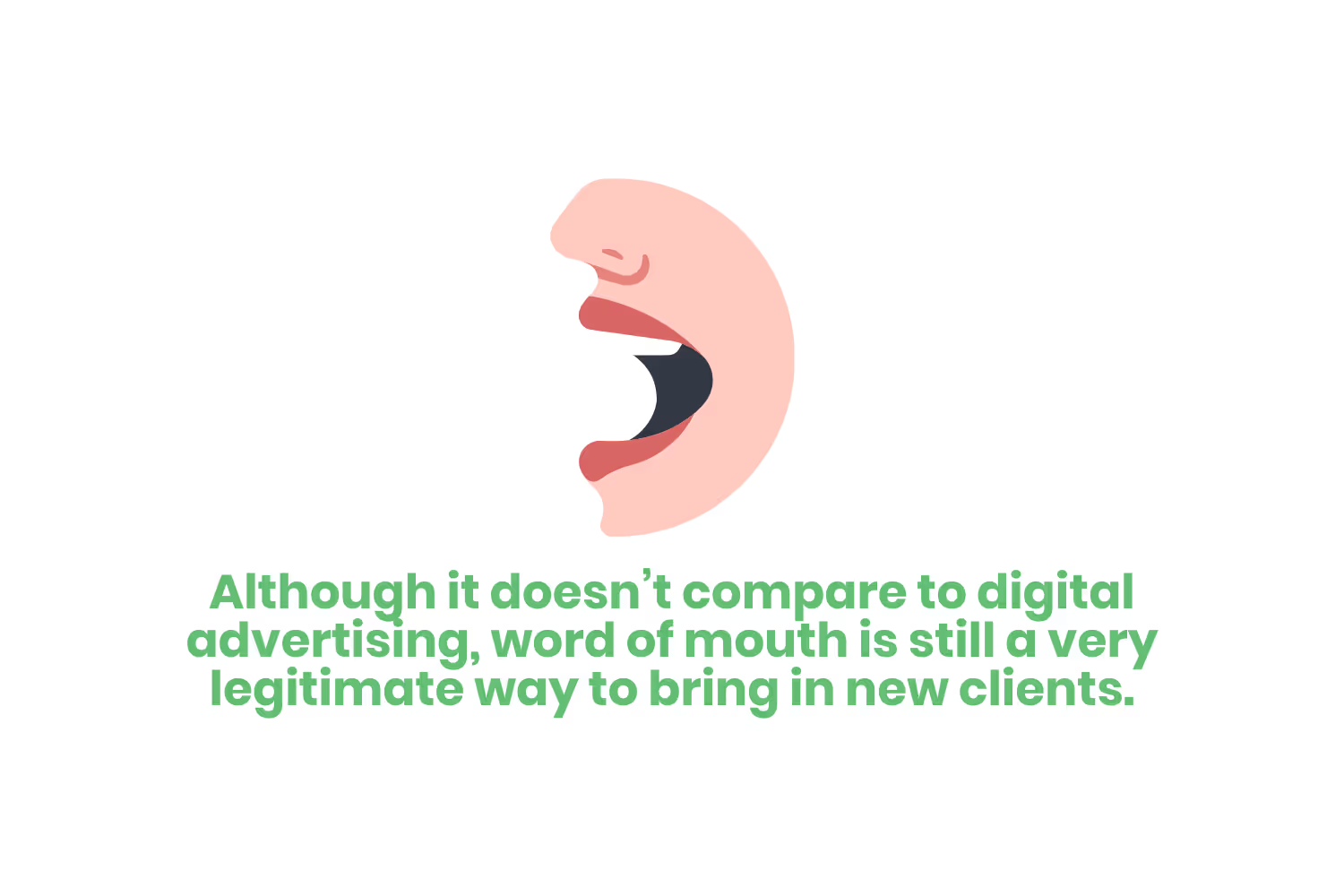
Although it doesn’t compare to digital advertising, word of mouth is still a very legitimate way to bring in new clients. Follow up with your clients after appointments, ask about their families, send birthday cards. These are all ways you can add a personalized touch to your service, which are more often than not appreciated by consumers and can land you a referral through them.
16. Focus on Long-Term
Not everyone in need of healthcare services requires emergency care. This is especially true for those looking to undergo elective surgeries. Patients will often choose when they visit and don’t need immediate care.
So focus on long-term results when practicing your marketing strategies. Using persistence and patience. Strive to position your healthcare organization as the reliable choice within your community by using all of the tips mentioned above. So that when someone does need help, they know they can trust your team.
Conclusion
Nowadays, consumers are much more involved in their healthcare experience. Changes in the market and consumer behavior is a huge factor in the increased importance of a top notch marketing strategy. Strategies like the ones listed above support this transition to a more consumer-driven healthcare approach by prioritizing education, drawing patients into the healthcare system, and providing exceptional customer service.
Emphasize your product's unique features or benefits to differentiate it from competitors
In nec dictum adipiscing pharetra enim etiam scelerisque dolor purus ipsum egestas cursus vulputate arcu egestas ut eu sed mollis consectetur mattis pharetra curabitur et maecenas in mattis fames consectetur ipsum quis risus mauris aliquam ornare nisl purus at ipsum nulla accumsan consectetur vestibulum suspendisse aliquam condimentum scelerisque lacinia pellentesque vestibulum condimentum turpis ligula pharetra dictum sapien facilisis sapien at sagittis et cursus congue.
- Pharetra curabitur et maecenas in mattis fames consectetur ipsum quis risus.
- Justo urna nisi auctor consequat consectetur dolor lectus blandit.
- Eget egestas volutpat lacinia vestibulum vitae mattis hendrerit.
- Ornare elit odio tellus orci bibendum dictum id sem congue enim amet diam.
Incorporate statistics or specific numbers to highlight the effectiveness or popularity of your offering
Convallis pellentesque ullamcorper sapien sed tristique fermentum proin amet quam tincidunt feugiat vitae neque quisque odio ut pellentesque ac mauris eget lectus. Pretium arcu turpis lacus sapien sit at eu sapien duis magna nunc nibh nam non ut nibh ultrices ultrices elementum egestas enim nisl sed cursus pellentesque sit dignissim enim euismod sit et convallis sed pelis viverra quam at nisl sit pharetra enim nisl nec vestibulum posuere in volutpat sed blandit neque risus.

Use time-sensitive language to encourage immediate action, such as "Limited Time Offer
Feugiat vitae neque quisque odio ut pellentesque ac mauris eget lectus. Pretium arcu turpis lacus sapien sit at eu sapien duis magna nunc nibh nam non ut nibh ultrices ultrices elementum egestas enim nisl sed cursus pellentesque sit dignissim enim euismod sit et convallis sed pelis viverra quam at nisl sit pharetra enim nisl nec vestibulum posuere in volutpat sed blandit neque risus.
- Pharetra curabitur et maecenas in mattis fames consectetur ipsum quis risus.
- Justo urna nisi auctor consequat consectetur dolor lectus blandit.
- Eget egestas volutpat lacinia vestibulum vitae mattis hendrerit.
- Ornare elit odio tellus orci bibendum dictum id sem congue enim amet diam.
Address customer pain points directly by showing how your product solves their problems
Feugiat vitae neque quisque odio ut pellentesque ac mauris eget lectus. Pretium arcu turpis lacus sapien sit at eu sapien duis magna nunc nibh nam non ut nibh ultrices ultrices elementum egestas enim nisl sed cursus pellentesque sit dignissim enim euismod sit et convallis sed pelis viverra quam at nisl sit pharetra enim nisl nec vestibulum posuere in volutpat sed blandit neque risus.
Vel etiam vel amet aenean eget in habitasse nunc duis tellus sem turpis risus aliquam ac volutpat tellus eu faucibus ullamcorper.
Tailor titles to your ideal customer segment using phrases like "Designed for Busy Professionals
Sed pretium id nibh id sit felis vitae volutpat volutpat adipiscing at sodales neque lectus mi phasellus commodo at elit suspendisse ornare faucibus lectus purus viverra in nec aliquet commodo et sed sed nisi tempor mi pellentesque arcu viverra pretium duis enim vulputate dignissim etiam ultrices vitae neque urna proin nibh diam turpis augue lacus.




